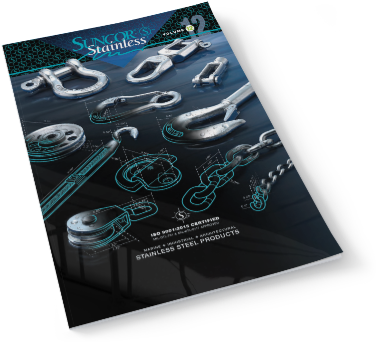Anchor Chain Sizing and Length Guide for Safe and Effective Anchoring
Step 1 – Determine the length of your boat. The boat’s specification sheet, and sometimes the owner’s manual, will have your boat length listed. However, if you’re unsure of your boat length, measure the hull, from the tip of the bow to the center of the stern. Be certain to use a measuring tape that will not stretch, such as a steel tape. Also, do not include the bowsprit or any other fittings that may have been added to the hull.
Step 2 – Determine the weight of your boat. Again, the boat’s specification sheet, and sometimes the owner’s manual, will list the dry weight of the boat. If you’re still unsure of the weight of your boat, you can use a weigh station at a local truck stop. Just be certain to subtract the weight of your boat trailer
Step 3 – Determine what your desired maximum anchorage depth is.
Step 4 – Determine the diameter of chain to use. Use the following chart to determine the minimum diameter of chain to use for your boat.
| Boat Length | Boat Weight | Chain Diameter |
| 20 to 25 feet | 2,500 lbs. | 3/16-inch |
| 26 to 30 feet | 5,000 lbs. | 1/4 -inch |
| 31 to 35 feet | 10,000 lbs. | 5/16-inch |
| 36 to 40 feet | 15,000 lbs. | 3/8-inch |
| 41 to 45 feet | 20,000 lbs. | 7/16-inch |
| 46 to 50 feet | 30,000 lbs. | 1/2-inch |
| 51 to 60 feet | 50,000 lbs. | 9/16-inch |
Step 5 – Determine the length of chain to use. Your total “anchor rode” (the nylon rope and chain combined connecting the anchor to the boat) should be between four and seven times the expected anchorage depth, depending on how crowded the anchorage. More crowded anchorage sites typically mean using a shorter rode, because boats don’t have as much room to swing.
To determine the chain portion of the rode, again refer to the length of your hull. Your chain should be no shorter than the length of your boat, as the chain’s weight will help set the anchor.
